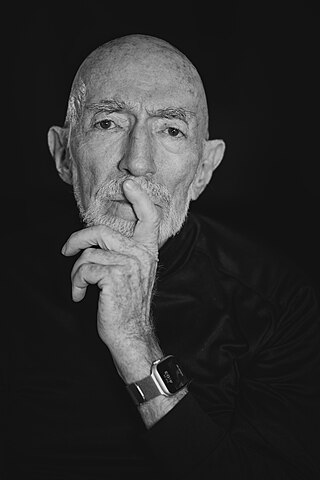
Kip Stephen Thorne is an American theoretical physicist known for his contributions in gravitational physics and astrophysics.

Joseph Hooton Taylor Jr. is an American astrophysicist and Nobel Prize laureate in Physics for his discovery with Russell Alan Hulse of a "new type of pulsar, a discovery that has opened up new possibilities for the study of gravitation."
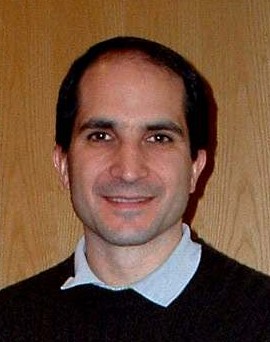
Juan Martín Maldacena is an Argentine theoretical physicist and the Carl P. Feinberg Professor in the School of Natural Sciences at the Institute for Advanced Study, Princeton. He has made significant contributions to the foundations of string theory and quantum gravity. His most famous discovery is the AdS/CFT correspondence, a realization of the holographic principle in string theory.
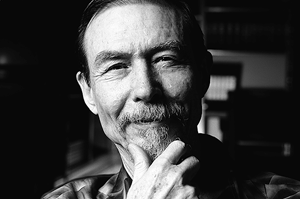
Carver Andress Mead is an American scientist and engineer. He currently holds the position of Gordon and Betty Moore Professor Emeritus of Engineering and Applied Science at the California Institute of Technology (Caltech), having taught there for over 40 years. He taught Deborah Chung, the first female engineering graduate of Caltech. He advised the first female electrical engineering student at Caltech, Louise Kirkbride. His contributions as a teacher include the classic textbook Introduction to VLSI Systems (1980), which he coauthored with Lynn Conway.
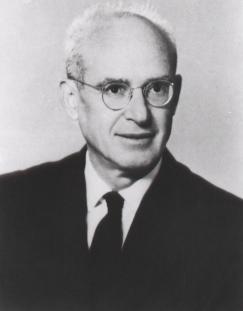
Nathan Rosen was an American-Israeli physicist noted for his study on the structure of the hydrogen atom and his work with Albert Einstein and Boris Podolsky on entangled wave functions and the EPR paradox. The Einstein–Rosen bridge, later named the wormhole, was a theory of Nathan Rosen.
Terrence Joseph Sejnowski is the Francis Crick Professor at the Salk Institute for Biological Studies where he directs the Computational Neurobiology Laboratory and is the director of the Crick-Jacobs center for theoretical and computational biology. He has performed pioneering research in neural networks and computational neuroscience.
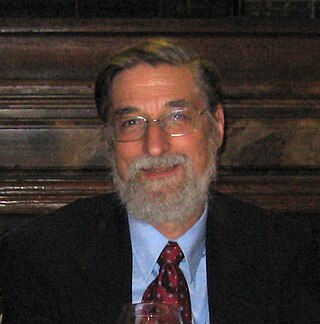
Bertrand I. Halperin is an American physicist, former holder of the Hollis Chair of Mathematicks and Natural Philosophy at the physics department of Harvard University.
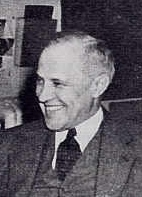
Karl Taylor Compton was a prominent American physicist and president of the Massachusetts Institute of Technology (MIT) from 1930 to 1948.
Network dynamics is a research field for the study of networks whose status changes in time. The dynamics may refer to the structure of connections of the units of a network, to the collective internal state of the network, or both. The networked systems could be from the fields of biology, chemistry, physics, sociology, economics, computer science, etc. Networked systems are typically characterized as complex systems consisting of many units coupled by specific, potentially changing, interaction topologies.
John Myrick Dawson was an American computational physicist and the father of plasma-based acceleration techniques. Dawson earned his degrees in physics from the University of Maryland, College Park: a B.S. in 1952 and Ph.D. in 1957. His thesis "Distortion of Atoms and Molecules in Dense Media" was prepared under the guidance of Zaka Slawsky.

William Samuel Bialek is a theoretical biophysicist and a professor at Princeton University and The Graduate Center, CUNY. Much of his work, which has ranged over a wide variety of theoretical problems at the interface of physics and biology, centers around whether various functions of living beings are optimal, and whether a precise quantification of their performance approaches limits set by basic physical principles. Best known among these is an influential series of studies applying the principles of information theory to the analysis of the neural encoding of information in the nervous system, showing that aspects of brain function can be described as essentially optimal strategies for adapting to the complex dynamics of the world, making the most of the available signals in the face of fundamental physical constraints and limitations.
The Computation and Neural Systems (CNS) program was established at the California Institute of Technology in 1986 with the goal of training Ph.D. students interested in exploring the relationship between the structure of neuron-like circuits/networks and the computations performed in such systems, whether natural or synthetic. The program was designed to foster the exchange of ideas and collaboration among engineers, neuroscientists, and theoreticians.
Stanislas Leibler is a French–American theoretical and experimental biologist and physicist. He is Systems Biology Professor at the Institute for Advanced Study in Princeton and the Gladys T. Perkin Professor and Head of the Laboratory of Living Matter at the Rockefeller University.

Ned S. Wingreen is a theoretical physicist and the Howard A. Prior Professor of the Life Sciences at Princeton University. He is a member of the Department of Molecular Biology and of the Lewis-Sigler Institute for Integrative Genomics, where he is currently director of graduate studies. He is the associate director of the Princeton Center for Theoretical Science, and is also associated faculty in the department of physics. Working with Yigal Meir, Wingreen formulated the Meir-Wingreen Formula which describes the electric current through an arbitrary mesoscopic system.
David Nathan Beratan is an American chemist and physicist, the R.J. Reynolds Professor of Chemistry at Duke University. He has secondary appointments in the departments of Physics and Biochemistry. He is the director of the Center for Synthesizing Quantum Coherence, a NSF Phase I Center for Chemical Innovation.
The Princeton University Department of Physics is an academic department dedicated to research and teaching at Princeton University. The associated faculty members, researchers, and students have been recognized for their research contributions, having been awarded 19 Nobel Prizes, four National Medals of Science, and two Wolf Prizes in Physics. Notable professors, researchers, and graduate students affiliated with the department include Richard Phillips Feynman, Joseph H. Taylor, Jim Peebles, Eugene P. Wigner, and John von Neumann. In addition, the department offers degree programs for bachelor's students (A.B.) and doctoral students (Ph.D.).
Sara A. Solla is an Argentine-American physicist and neuroscientist whose research applies ideas from statistical mechanics to problems involving neural networks, machine learning, and neuroscience. She is a professor of physics and of physiology at Northwestern University.







